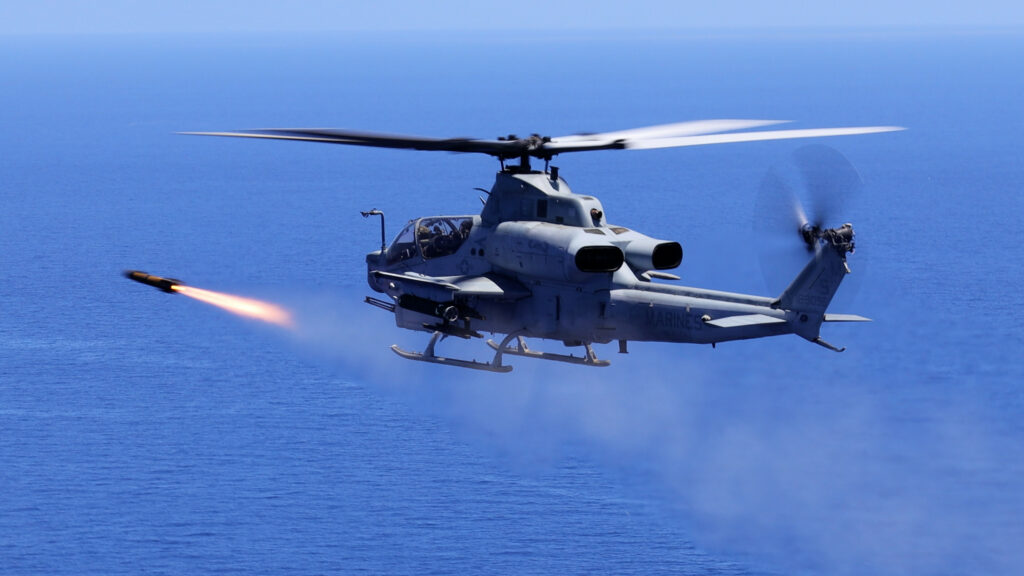Lockheed Martin’s lethal AGM-179 Joint Air-to-Ground Missile (JAGM) successfully struck and sank a mock vessel during its debut launch in the Pacific.
An AH-1Z Viper attack helicopter operated by the US Marine Corps was used to fire the live missile as part of an expeditionary strike exercise in the Philippine Sea.
According to the service, the weapon scored a direct hit against a towed target vessel, causing it to descend into the ocean.
The successful test highlighted the JAGM’s ability to defend key maritime space against hostile surface ships.
It also allowed the USMC to demonstrate its capability to “deliver precision strikes at sea and safeguard a free and open Indo-Pacific.”
In 2022, the US military tested the JAGM against land targets to further refine its employability in expeditionary advanced base operations.
Designed for High-Value Targets
Development of the AGM-179 JAGM began more than a decade ago to replace the legendary and highly reliable Hellfire missile.
It was designed for helicopters, drones, and other fixed-wing platforms to destroy high-value maritime and land targets — whether stationary or moving.
The weapon utilizes a multi-mode seeker to ensure a precision strike even in adverse weather and obscured battlefield conditions.
It also boasts a fire-and-forget capability and can withstand a variety of countermeasures.
“JAGM has repeatedly proven that it can be counted on when it matters most, providing mission-focused offensive and defense capabilities and maintaining a competitive edge against any potential adversaries,” Lockheed vice president Jerry Brode said.
In 2020, the JAGM failed to achieve its desired effects on a target during a live-fire test, prompting Lockheed to improve the missile.



